Don't miss a visit, before or after having a swim in the sea
The hill of San Leucio: the beautiful “realized utopia”
Discover this little known Italian treasure!
by Nicoletta Speltra.
Here is a chance to visit a little known Italian treasure: the hill of San Leucio.
The Bourbon king Ferdinand IV loved so much this hill, these lush forests, vineyards and beautiful fields that he created here his own oasis of peace. Almost a kingdom in the kingdom.
The hill borders the Royal Palace of Caserta to the south. For the king this was the perfect place to go while escaping the chaos of the court. Moreover, he came here to hunt and, according to some gossips, to run after pretty maidens. But Ferdinand IV said that his reasons were different:
Nella magnifica abitazione di Caserta, cominciata dal mio augusto padre, proseguita da me, io non trovava il silenzio e la solitudine atta alla meditazione ed al riposo dello spirito […]; così che, cercando luogo più appartato che fosse quasi romitorio, trovai adatto il colle di San Leucio.
(I couldn’t find the solitude and the silence I needed in order to meditate and to rest in the magnificent palace of Caserta. It was my august father who started building it and now I am carrying it on […]; therefore I looked for a more secluded place, a kind of hermitage. And I found that the hill of San Leucio was suitable enough).
It is difficult to say if these were his true reasons. As a matter of fact, he planned a great social experiment here, an Enlightenment dream destined to become largely reality. Around the year 1776 Ferdinand IV founded on the hill a silk factory, which would be famous far beyond the borders of the kingdom of Naples and the Two Sicilies. Indeed, soon the ladies, the princesses, the queen and the king himself started to wear the clothes made of the fabrics produced in this factory during the court lunches and parties.
Moreover the king built houses and schools for the locals, who increased in number thanks to the favourable climate and the absence of conflicts. He also coverted the splendid Belvedere building into a church. This palace had been built in the 16th century by the Acquaviva family, who were the feudal lords of Caserta.
All the neoclassical architectural jewels were signed by architect Francesco Collecini, a student of Luigi Vanvitelli, the brilliant creator of the nearby Royal Palace. Later, in 1789, Ferdinand IV promulgated a code of laws to regulate the life of the small community of silk weavers. The code was so advanced as to be considered a daring anticipation of modern civil ordinances and so famous as to contribute, at least in part, to reject the negative reputation he got (as “Re Lazzarone”) after the acts he committed during the Neapolitan revolution in 1799. However, these events destroyed the dream of “Ferdinandopoli”, a large modern industrial city that was supposed to have at its center just the San Leucio Royal Colony.
But a lot had been done. The concrete testimony of this beautiful “realized utopia” is still here, in this small territory near Caserta. You can find the proof of it among the stylish buildings lined up along Via San Carlo and Via San Ferdinando, in the church, in the halls of royal apartments and in the ones of old spinning mills, which have been restored and turned into huge exhibition spaces.
To defend the harmony of this land and of these buildings from the dangers of deterioration, the citadel of the silk was included in 1997, together with the Royal Palace of Caserta, in the World Heritage List, the prestigious list of world heritage of humanity. And here on special occasions, you can experience the atmosphere and the splendour of the 18th century , thanks to the actors of the street parade and their silk dresses.
The silk producing tradition is being perpetuated by some local families, like the De Negri and Alois families, who have managed to combine the inherited craftsmanship techniques with the latest technology in order to produce fabrics of great beauty and value, such as damasks and brocades. And if you pay attention you will find out that nowadays these fabrics can still be seen in Vatican City, in the Quirinal Palace, in the Kremlin and in the Oval Office of the White House.
by Nicoletta Speltra
pic courtesy of Anna Maria Speltra

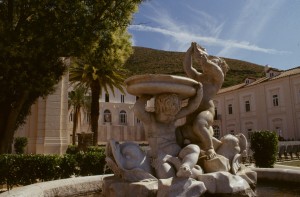

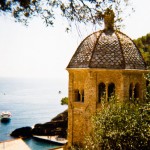
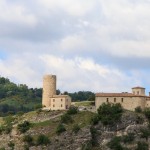
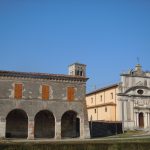
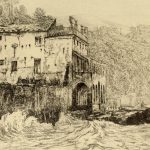










1 Comment
URL
… [Trackback]
[…] Find More Informations here: italiaslowtour.com/the-hill-of-san-leucio/ […]